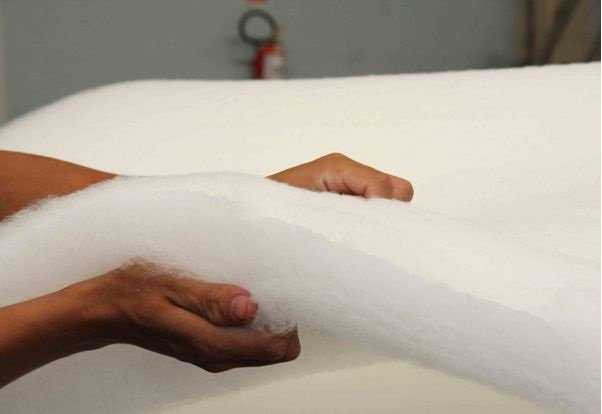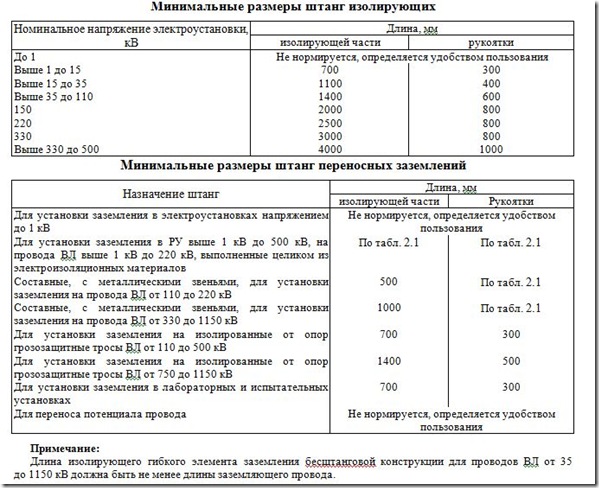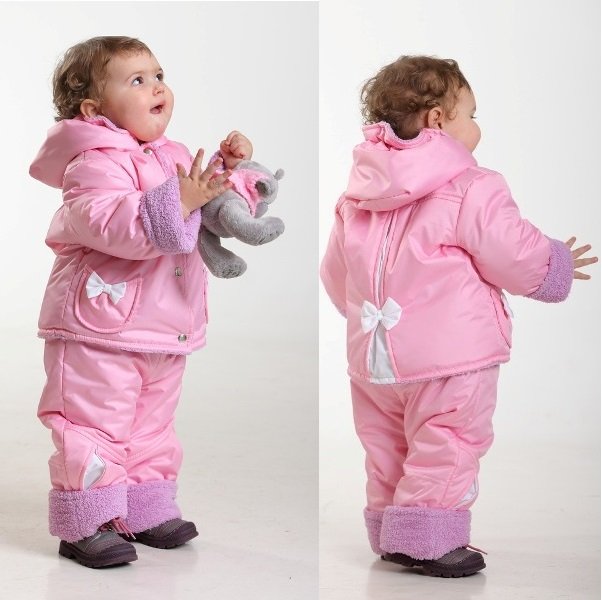Thinsulate™ insulation. History and types
The main merit of 3M ™ for the outdoor industry was the gradual destruction of the stereotype "thick = warm" and, as a result, the beginning of active penetration into everyday clothes and shoes of functional materials designed for extreme conditions...
In the late 1930s Al Boese, a researcher at the American company 3M™, was experimenting with a machine for kneading rubber mass for adhesive tapes. In the process, he discovered a way to obtain and connect the finest fibers of cellulose acetate. The assessment of the prospects and the further introduction of the new technology, apparently, was prevented by the war, therefore, initially it was not given much importance and it was hardly used until the early 1950s, when Boez's achievements were applied in the noise insulation industry. Only in the early 1960s. 3M™ began experimenting and testing stapled microfibers already as a thermal insulator. The new insulation was supposed to be used, first of all, in work clothes (the market for goods for tourism and outdoor activities in North America was then just emerging). This predetermined the conditions of testing - clothes and shoes insulated with the new 3M development were provided in the winter to luggage porters at airports, postal employees, and pipeline builders in Alaska. In total, laboratory and field tests took seven years.
Thinsulate ™ (from the English thin - "thin" and insulate - "insulation"
Advertising 3M illustrating
breadth of Thinsulate™ applications
The name Thinsulate ™ (from the English thin - "thin" and insulate - "insulation") was assigned to the new insulation in 1978, shortly before its launch on the market. In the same year, the trademark of the same name was registered.
The main property of the new insulation was a high degree of thermal insulation per unit thickness.
The main property of the new insulation was a high degree of thermal insulation per unit thickness. This was achieved due to the relatively high density of the mixture of polyester and olefin microfibers, which were 10 times thinner than a human hair. This allowed the insulation to retain a large amount of bound air, which, as you know, is an excellent heat insulator.
The small thickness of the Thinsulate™ insulation layer determined its main really working advertising slogan: "Warmth without bulk" - "Warmth without bulkiness".
Here it is necessary to pay tribute to the company 3M ™, because in the late 1970s. insulated items were exceptionally voluminous - this applied to puff jackets and products using the latest Polarguard ™ for its time. The thinness of Thinsulate™ has enabled many designers from brands such as Calvin Klein, London Fog, and others to create both warm and elegant garments, ultimately making it the most recognizable insulation used in the outdoor industry today.
"Warmth without bulk" - "Warmth without bulkiness"
All these advantages were quickly appreciated not only by fashion lovers. Due to its resistance to compression, small volume, low wetness, and relative cheapness, Thinsulate™ began to be widely used in the early 1980s. manufacturers of clothing and footwear for outdoor activities, hunting, fishing, etc. Due to its high thermal insulation per unit of thickness, Thinsulate™ has become widely used in insulated footwear, where it is critical to provide sufficient internal volume for a comfortable fit, thus denoting the superiority of "synthetics" over natural insulation in winter shoes. For the same reason, Thinsulate is often seen wearing hats and gloves.
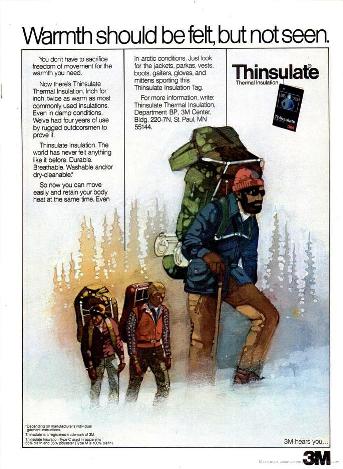
Thinsulate on the Backpacker pages.
October 1981
The only serious drawback of the new industry in the early 1980s. Insulation was a rather large weight per unit volume, which did not allow it to be effectively used in sleeping bags, as well as where it was necessary to get the warmest and at the same time light clothing, for example, in mountaineering. Probably in this regard, in the late 1980s. issued Thinsulate™ Liteloft- 3M composite insulation, consisting of microfibers that hold air and larger diameter fibers that increase its volume. This gives high thermal insulation properties per unit weight and a relatively small packing volume. It is noteworthy that Thinsulate ™ Liteloft appears almost simultaneously with the introduction to the civilian market Primaloft One and only slightly inferior to him in terms of thermal insulation.
Types of Thinsulate™
Over the 30 years of its existence, the Thinsulate™ family of heaters has grown significantly. Today, two of their classifications coexist in parallel. We see one on the paper labels attached to the product. The second divides insulation into types and is used within the 3M ™ company itself and is better known among manufacturers of clothing and accessories, as well as those who like to sew on their own. At the same time, both classifications are equally common in available network resources, which sometimes causes confusion and misunderstanding. Especially since some types of Thinsulate™ are used exclusively in bedding, others in workwear, and still others in clothing and footwear for sports and outdoor activities. Therefore, in our review, we will try to operate with both classifications, based on the most "fresh" 3M™ data.
All Thinsulate™ varieties are now divided into two series:
- Warmth plus Technology or Platinum
Warmth Plus Technology("heat plus technology"), or Platinum, which combines the most advanced 3M technical solutions in the field of insulation, which includes:
Type S |
The name comes from the first letter of the word Supreme - English. "higher". The main and most versatile insulation in the family Platinum. Unlike other varieties, it is 100% polyester fibers. More precise data on the composition and type of fibers has not been published, however, judging by the application, the insulation withstands compression well and has a good weight / thermal insulation ratio. It is used in a very wide range of products - in ski and snowboard boots, as well as in insulated clothing and accessories for everyday use and outdoor activities. Referred to as 3M™ Thinsulate™ Platinum. |
Type FX |
He is 3M™ Thinsulate™ Flex. Due to the increase in the percentage of olefin fibers, it has good stretching properties with a slight decrease in thermal insulation properties. It is actively used in clothing that provides maximum freedom of movement. |
Type XT-S |
He is 3M™ Thinsulate™ X-Static, belongs to the Platinum family. Appeared in 2009. Consists of a mixture of polyester fibers (98%) and silver ionized fibers X-Static, which prevent the rapid growth of the number of bacteria responsible for the appearance of an unpleasant odor. The main area of application is clothing and accessories for high-intensity loads. |
FR type |
Or Platinum FR, appeared in 2009 - consists of a mixture of fire-resistant fibers of acrylic, polyester and aramid. It was created specifically for work clothes used in work with flammable materials and electricity. |
Warmth Plus Additional Features ("warmth plus extras"), which includes all other varieties of Thinsulate™:
Type C |
The oldest member of the entire family. Due to the very high thermal insulation per unit thickness and good resistance to compression, it is used in a very wide range of products - accessories, outdoor clothing, fashion and work clothing. First of all, it is used where the finished product needs to be made as thin as possible without losing thermal insulation. Today it is marked with a black and gray label. Thinsulate™ thin, light, warm. |
Type G |
Indicated by a black and orange label Thinsulate™ Extra Warmth. Budget insulation almost entirely consisting of polyester microfibers, which affected durability, and also increased the thickness of finished products. |
Type R |
Indicated by black and green labels Thinsulate™ with recycled fibers. Appeared in the mid-1990s, against the backdrop of increased user interest in environmental issues. Made from 50% recycled fibers. According to the manufacturer, it is not inferior to type C in terms of heat-insulating properties. |
Type U |
Indicated by black and orange labels Thinsulate™ Ultra for footwear. Compared to type C, the amount of olefin fibers is increased, which gives Ultra a very high resistance to various loads, making it almost ideal for footwear applications. In addition to the regular version, there is also Ultra Extreme Performance (Type B), which is the same insulation, but with an increased density - from 400 to 1000 grams per square meter. m. Used in shoes designed for extremely low temperatures with a low degree of physical activity (hunting, fishing, working in the Far North, etc.). |

Classic black and white
Thinsulate label
Other Thinsulate™ varieties that do not fall into the main categories are indicated by the classic black and white label. For example, type Z - at the moment it is used only in bedding, for which it was developed. Appeared in 2006. It is noticeably cheaper than the already mentioned Liteloft™, but loses to it in terms of thermal insulation properties and durability, although it has similar tactile sensations - finished products resemble downy ones in their softness and airiness.
For each of the above types of Thinsulate ™ there is a special information card, which lists the article numbers of materials available for order by the manufacturer, describes their composition and properties, as well as recommendations for care.
Thinsulate Featherless
The new Thinsulate Featherless insulation is purposely placed separately. It was first presented at the ISPO 2014 exhibition. This insulation almost completely imitates natural fluff. 3M has been producing high-tech insulation for over 30 years, but this is the first such insulation in the range of this brand.
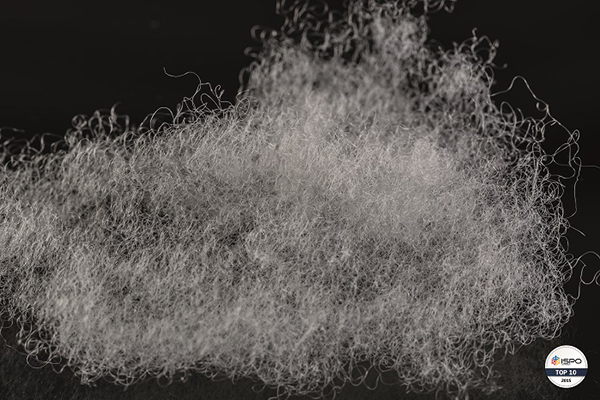
3M Thinsulate Featherless synthetic insulation should be a hypoallergenic alternative to natural down. It imitates the appearance and thermal insulation properties of natural fluff, while it is absolutely not afraid of water. 3M Thinsulate Featherless insulation is as light as natural down, breathes freely and provides unsurpassed protection from the cold even in the most extreme conditions.
- retains heat even when wet
- has comparable qualities to Fill Power 600 down
- has greater elasticity with the same weight as natural down
"3M Thinsulate Featherless insulation is a more effective and cost effective alternative to natural down", says Erik Iverson, brand ambassador for 3M Thinsulate. - “This innovative 3M solution is just the beginning as we continue to grow the Thinsulate brand and bring new, better products to market.”
The main merit of 3M ™ for the outdoor industry was the gradual destruction of the stereotype "thick = warm" and, as a result, the beginning of active penetration into everyday clothing and footwear of functional materials designed for extreme conditions.
© Sport-Marathon, 2017 This publication is subject to copyright. It is forbidden to copy the text to other sites and resources on the Internet without the prior consent of the copyright holder -.
- Rules for the use of electrical protective equipment when working in electrical installations
- How to sew fleece mittens
- Protective equipment in electrical installations
- Glasses for a computer: which is better to choose
- How to wash things with thinsulate insulation
- Training in electrical safety, labor protection, ecology, electrical safety, fire-technical minimum, first aid to victims courses
- Means of protection in electrical installations up to and above 1000 Volts
- What is fleece fabric, where is it used and how to care for it
- Personal protective equipment
- What is this fabric?
- Thinsulate
- Benefits of onions for dental health
- Dream interpretation why teeth fall out in a dream
- What does it mean if you dreamed of lard - salty, fresh or with a layer
- Seven good reasons why there might be life on other planets
- The most famous mummies of the world and their mysterious stories What does a mummified body look like
- Sleep dead baby boy girl
- Posts tagged ‘multi-shot crossbow’
- The longest rivers in the world
- Compilation and solution of chemical equations




